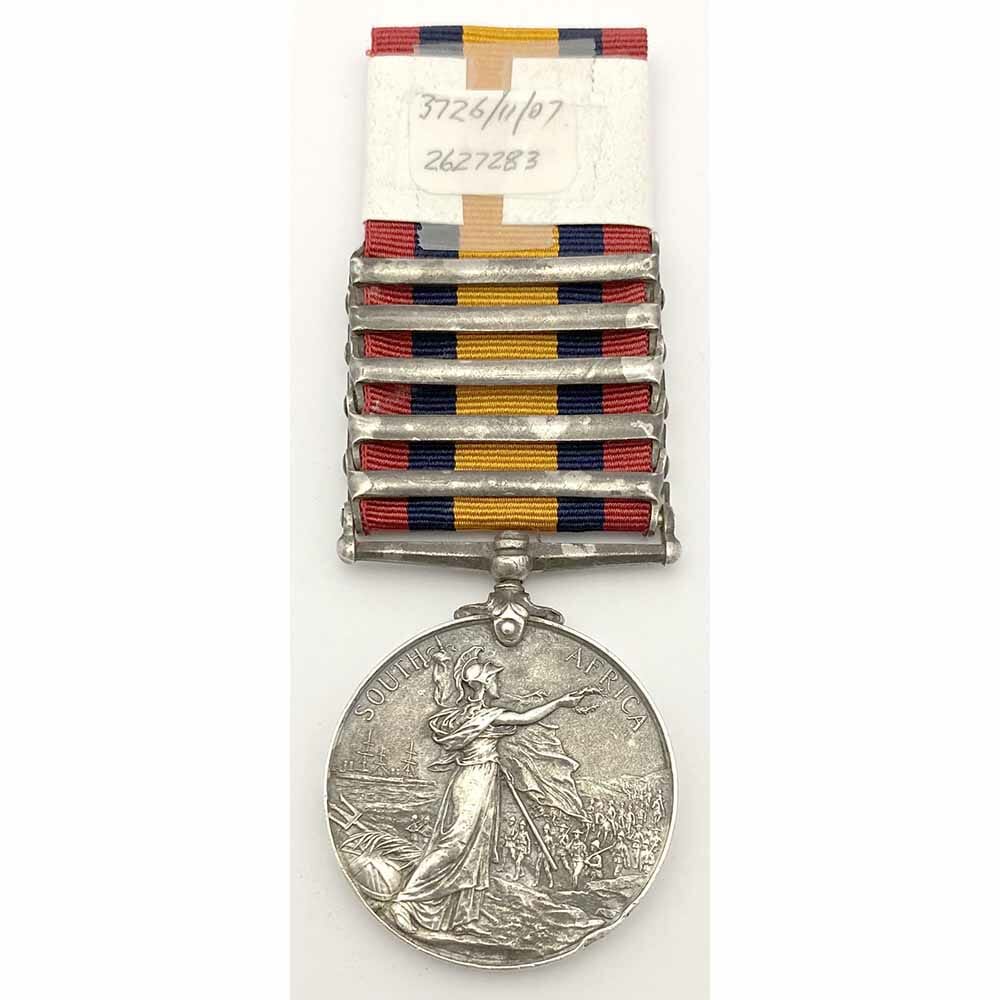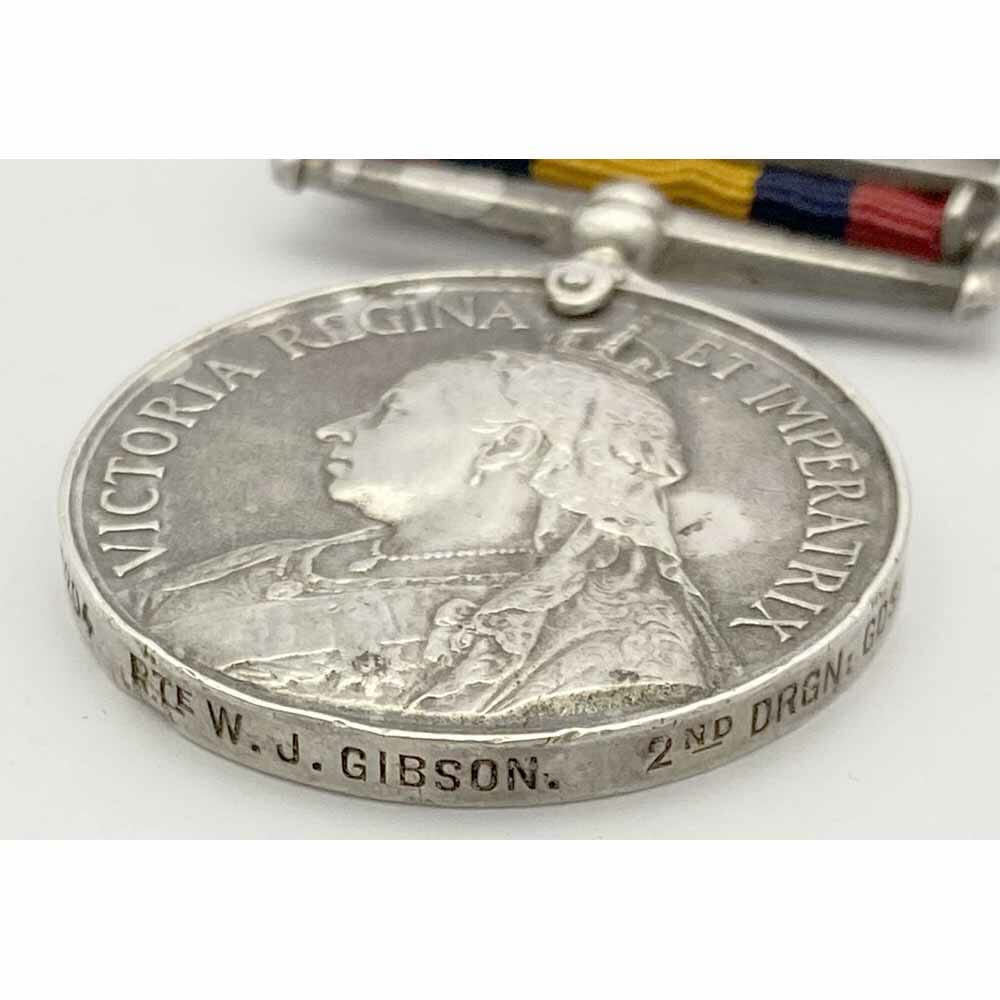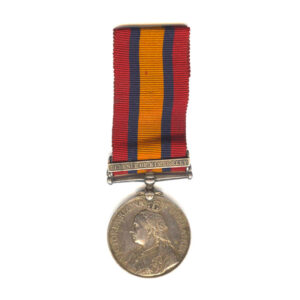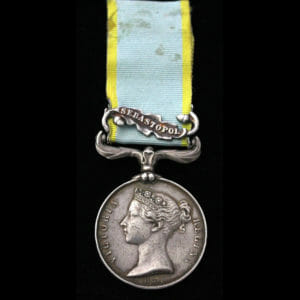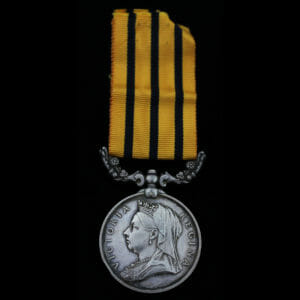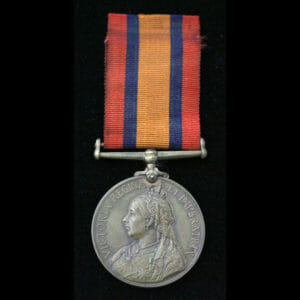Description
Queen’s South Africa Medal, 5 bars, Cape Colony, Orange Free State, Transvaal, SA 1901, SA 1902, 5204 Pte W. J. Gibson, 2nd Dragoon Guards, severely wounded in action at Leeuwkop, 1st April 1902.
Officially impressed: “5204 PTE W. J. GIBSON. 2nd DRGN: GDS:” Some edge knicks and general wear.
Bar entitlement confirmed on the roll, which remarks he was afterwards transferred to the 4th P. R. Dragoons.
He continued his service and was still a serving Sergeant with the 2nd Dragoon Guards stationed at Aldershot at the time of the 1911 Census.
Naturally he accompanied the 1st Cavalry Brigade to France in August 1914, and fought at the Battle of Mons, only a few days later during the “Great Retreat” from Mons, he was killed in action.
However the medals rolls and MIC state the 1914 clasp and BWM and Victory Pair were returned to the mint.
William John Gibson, was born in Wooburn Green, Buckinghamshire, during 1882.
During the Boer War, The 2nd (Queen’s Bays) Dragoon Guards, arrived later than most to the war, they sailed on the Orotava on 18th November 1901. By February 1902 a brigade was formed under Colonel The Hon Lawley consisting of the 2nd Dragoon Guards and the 7th Hussars, to operate in the Winburg district.
The Battle that occurred on the 1st April 1902 at Leeuwkop, also known as Boschmanskop was the worst day of the war for the regiment, in an action against superior numbers of Boers, they took heavy casualties over many hours of fighting, they lost 2 Squadron Leaders and 10 NCOs and Men killed, with 5 Officers and 59 men being wounded.
The action from the book by Stirling: British Regiments in South Africa 1899-1902.
“In his despatch of 8th April 1902, Lord Kitchener says that Colonel Lawley sent out Colonel Fanshawe with three squadrons of the Queen’s Bays and 30 National Scouts to make a detour preparatory to co-operating with his own advance. At 3.15am Fanshawe rounded a farm, where several Boers were captured; he then went on and tried to surround a laager, but the enemy were on the alert and he “was received by a very heavy fire, and realising that he was in the presence of superior numbers, ordered a gradual retirement upon Leeuwkop. Close fighting then went on for several hours. The Bays, who were skilfully handled, retired steadily by alternate squadrons, whilst the Boers followed, pressing the withdrawal with the greatest determination and persistence.”
Leeuwkop was found to be in the enemy’s hands, and Fanshawe had to make for another ridge, “where he received the timely support of the 7th Hussars and Colonel Lawley’s guns.” The Boers then fell quickly back.
“In this affair, although the Bays were capably handled and displayed steadiness and gallantry in face of superior numbers, their losses were, I regret to say, heavy. Two squadron-leaders and 10 non-commissioned officers and men were killed, and 5 officers and 59 men were wounded.”

